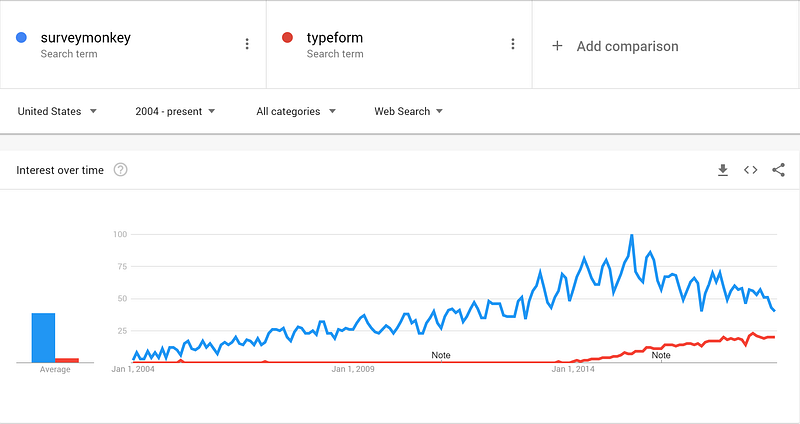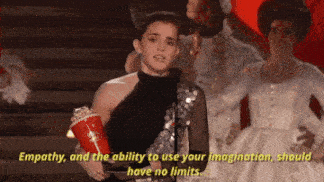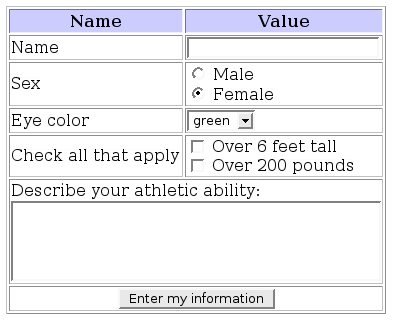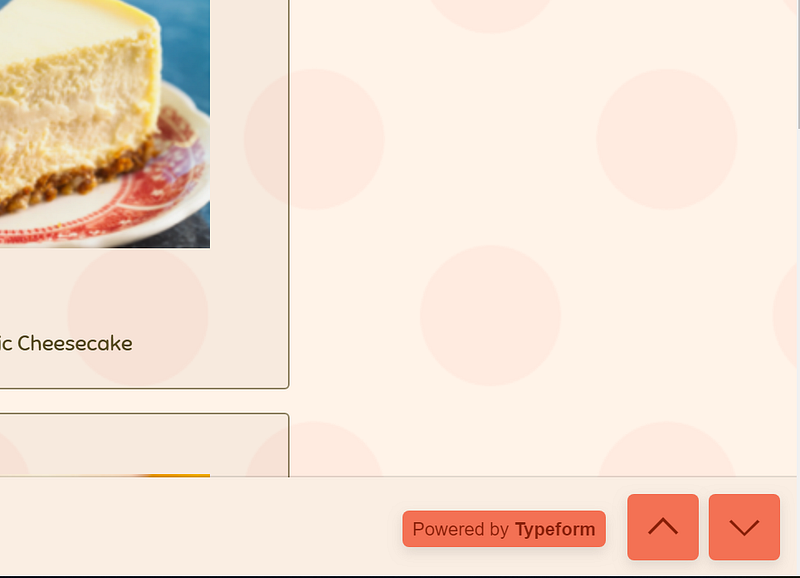Typeform: Trasformare i moduli in conversazioni umane
Prodotti iconici Episodio 009
Prima di iniziare, un disclaimer: uso Typeform e lo adoro. 😍

In Salesflare usiamo Typeform da un po' di tempo e non vorrei usare nessun altro software di sondaggio con i nostri clienti.
Adoro il fatto che l'esperienza sia molto migliore rispetto a qualsiasi altra applicazione concorrente. L'uso di Typeform rende l'interazione con Salesflare un po' più umana, cosa che apprezziamo molto. ❤️
Typeform rende più umane le relazioni con i clienti.
Nonostante ciò, non sono mai riuscito a capire concretamente come ci riescano. Perché nessun'altra applicazione sembra reggere il confronto. E come fa Typeform a mantenere questo vantaggio in tutti questi anni. Perché nessuno li batte?
Così mi sono imbarcato nella nostra nona ricerca sui prodotti iconici, indagando su cosa esattamente rende Typeform così iconico.
Andiamo 👇
Rendere le cose un po' più umane
La scintilla per Typeform è scoccata quando i fondatori stavano costruendo un modulo per le richieste di informazioni che sarebbe stato utilizzato in uno spazio espositivo. Si tratta di oggetti che catturano i dati.
Volevano renderlo migliore di quello che avevano visto prima. Invece di limitarsi a costruire un modulo standard, volevano creare qualcosa che saltasse agli occhi delle persone e le coinvolgesse.
Hanno rilevato una mancanza di empatia nel modo in cui la maggior parte delle aziende chiedeva i dati. Passare dalle conversazioni faccia a faccia ai moduli online sembrava un passo molto grande. Le persone continuavano a scrivere nelle caselle e a cliccare sui bottoni, il che non sembrava un'esperienza molto umana. 🙄
Ispirandosi al film "War Games", dove il protagonista ha una conversazione dattiloscritta con un computer mainframe, hanno pensato di creare un modulo che assomigliasse di più a una conversazione.
 L'ispirazione per Typeform: Giochi di guerra. Lo vedete o no? 😏
L'ispirazione per Typeform: Giochi di guerra. Lo vedete o no? 😏Il loro obiettivo era creare qualcosa di più piacevole che riempire alcune caselle. Volevano eliminare la barriera tra gli esseri umani e i computer.
Anni dopo, hanno riassunto questo concetto nella dichiarazione di visione di Typeform:
Rendere le cose un po' più umane.
Typeform ritiene che i moduli non servano solo a raccogliere i dati necessari, ma anche a controllare l'impressione che si lascia. O come dicono loro: "Il modo in cui si chiede è tutto". 🤯
Typeform antepone l'esperienza umana ai dati
Il DNA di un'azienda inizia spesso con i suoi fondatori.
Nel caso di Typeform, il modo preferito dai co-fondatori di trascorrere la giornata è la progettazione. È in quel momento che la loro energia fluisce davvero. 🤩
Il suo principale concorrente e leader di mercato, SurveyMonkey, è per DNA una società di analisi dei dati. Typeform è diversa. È un'azienda di interfacce utente.

È ovvio che al team interessano i dati. Altrimenti non creerebbero un software che raccoglie dati. Ma hanno una mentalità "prima le persone, poi i dati".
Credono nell'essere "informati dai dati, piuttosto che guidati dai dati". Ciò significa che riconoscono il potere dei dati, ma non abbandoneranno mai completamente il loro istinto.
Si tratta di fondere la percezione dei clienti con i tassi di conversione. Bilanciare sensazioni e fatti. Sensazioni e metriche.
Typeform antepone il design empatico a quello basato sui dati.

Il team di Typeform a volte dice di lavorare sulla HX, non sulla UX. Esperienza umana, non esperienza utente.
L'UX consiste nel portare una persona da A a B con successo. L'HX va oltre. Si pone la domanda: hanno raggiunto il punto B con una connessione emotiva?
Il team di Typeform pensa agli esseri umani. Persone reali. Quali sono le loro esigenze? Le loro emozioni?
Richiede di pensare a chi è veramente l'utente. Avvicinarsi a loro. Comprenderli. 🤗
A questo scopo, Typeform fa molte ricerche sui clienti. E non è solo il team di prodotto a testare costantemente nuove idee sui clienti. Anche il team go-to-market sta lavorando per cercare di avvicinarsi ai clienti, per capire dove si trova veramente il valore di Typeform, cosa vogliono veramente.
Alla fine, il legame emotivo è ciò che fa innamorare le persone di un prodotto. ❤️
Il design di Typeform è il risultato di un'attenzione incessante
Sembra che i ragazzi di Typeform siano dei geni, vero?
Sebbene una parte del successo del software possa essere attribuita all'intelligenza e alle scelte intelligenti, probabilmente è più il risultato di un'estrema concentrazione. È l'investimento incessante di tempo e risorse in un obiettivo chiaro.
Quello che vedete oggi quando compilate un Typeform è il risultato dell'ossessione per centinaia di piccoli dettagli per un lungo periodo di tempo. Il team ha lavorato instancabilmente attraverso molte iterazioni, curando uno per uno i più piccoli dettagli dell'interazione con il modulo.

Concentrandosi costantemente sull'usabilità, sul tocco umano e sul bel design, Typeform ha reinventato qualcosa che esisteva da decenni. E hanno continuato a perfezionarlo e ad ampliarlo per mantenerne l'unicità.
E questo è servito a Typeform. In un mercato saturo come quello dei moduli, competere copiando ciò che esiste già sarebbe stato inutile. Invece, Typeform ha prodotto qualcosa che le persone volevano e che non avevano ancora ottenuto: un bel modo di costruire moduli accattivanti.
Ci danno moduli che non sembrano moduli.
Mettete la mano in alto se vi piace compilare i moduli...
Sì, non credo proprio. 😏
Abbiamo tutti bisogno di comunicare i dati, ma non ci piacciono i moduli. Vogliamo moduli che non sembrino tali.

Ecco come rendere i moduli più umani.
Uno alla volta
Typeform suddivide l'interfaccia del modulo in componenti più piccoli. Non si vede un grande elenco di domande, ma solo una alla volta e il flusso delle cose è naturale.

Questo rende il lavoro più gestibile, lo rende più motivante e mantiene le persone più impegnate.
Caratteri più grandi per conversazioni più umane
Una domanda alla volta significa che è possibile utilizzare più spazio sullo schermo.
Inoltre, utilizzando caratteri molto più grandi rispetto alla media dei moduli, i creatori dei moduli sono incoraggiati a formulare domande più dirette e più umane. E chi lo compila dà risposte più umane.
Niente scatole, meno pulsanti
Scrivere in caselle e fare clic su piccoli pulsanti non è molto umano. Ecco perché Typeform funziona con una riga di testo e un cursore. Una domanda e la possibilità di rispondere. Tutto qui.

Vi piacciono i bottoni? Lo dimostreranno. Ma se non si vuole toccare il mouse e si vuole usare solo la tastiera, è possibile farlo. Basta premere "Invio" o uno dei tasti di scelta rapida indicati accanto alla risposta.
Oltre il testo
Un modulo abituale è un grande foglio di testo, che chiede di aggiungere altro testo.
Typeform consente di costruire facilmente moduli con icone, immagini, gif e video. Rende le cose più visive. E ancora, più umane.

Typeform cresce grazie alla viralità e alle integrazioni
Come tutti i prodotti che crescono alla velocità della luce, i suoi meccanismi di crescita sono speciali e inerenti all'uso principale del prodotto.
1. Crescita virale: ogni modulo inviato è una pubblicità per Typeform.
Le persone inviano moduli alle persone. Questi moduli sono bellissimi. E contengono una sottile dicitura "Powered by Typeform".

È semplice, ma questo pulsante equivale a 50% delle iscrizioni a Typeform. 🚀
2. Integrazioni: le persone rimangono se Typeform fa parte di un flusso di lavoro.
Le integrazioni sono ottime per la fidelizzazione di Typeform. Se inviate un sondaggio solo una volta, potreste non avere più bisogno di Typeform. E si potrebbe finire per interrompere l'abbonamento. 🛑
Non appena si incorporano i moduli in un flusso di lavoro, tutto cambia. Non si può smettere di usare Typeform. Ciò richiederebbe la sostituzione del modulo o addirittura l'interruzione dell'intero flusso.
Ecco perché Typeform ha dedicato molto tempo alla creazione di integrazioni con MailChimp, Google Sheets, Zapier, ... e perché consente di incorporare i moduli in qualsiasi sito web.

3. Branding: le persone scelgono Typeform solo se lo ritengono diverso.
Il team di Typeform ha impiegato un'enorme quantità di tempo e risorse per comprendere e ridefinire il proprio marchio. E poi ha rifatto tutti i disegni.

Vogliono assicurarsi che le persone comprendano il lato umano dell'azienda e il modo in cui rendono più umane le forme. In questo modo, vogliono andare oltre l'essere una semplice azienda di software. 🦄
E vogliono anche iniziare a comunicare chiaramente l'altra cosa che Typeform vuole superare: essere solo moduli.
Typeform punta a crescere oltre i moduli
Fin dall'inizio, i fondatori di Typeform hanno avuto una visione che consisteva nel rendere la comunicazione più umana.
Hanno iniziato con i moduli e si sono chiamati Typeform. Ora vogliono crescere oltre.
Stanno cercando di allontanarsi dall'essere visti come strumenti di forma o di costruzione di sondaggi, per essere percepiti come strumenti di comunicazione. Verso la comunicazione umana in generale.
Al momento, è possibile utilizzare Typeform per organizzare sondaggi, moduli di feedback, quiz, storie interattive, ... ma l'obiettivo è molto più ampio. 🔭

Typeform consente di avere una conversazione attraverso un'interfaccia. Con Typeform è possibile fornire dati e collegarli. È possibile creare flussi di lavoro.
Le persone dovranno sempre raccogliere informazioni da altre persone. Il problema è come lo faranno. Non avverrà sempre attraverso un browser o un modulo. Tra le altre cose, il team sta già valutando la possibilità di utilizzare l'intelligenza artificiale, la VR e la tecnologia vocale. Organizzare e trascrivere automaticamente le conversazioni.
Typeform si occupa di creare interfacce conversazionali e di capire come sostituire le tradizionali interfacce punta e clicca.
E non si fermeranno finché non avranno raggiunto il loro pieno potenziale. 🙌
Bonus: Typeform... cosa c'è nel nome?
Vi siete mai chiesti cosa significhi il nome Typeform? 😏

Secondo il suo co-fondatore, David Okuniev, si riferisce a:
- La possibilità di digitare semplicemente all'interno del modulo senza toccare il mouse
- Il fatto che si tratti di un tipo diverso di forma
- L'importanza della tipografia nel loro prodotto
Volete scoprire altri prodotti iconici? Leggete l'intera serie qui! 📲
Speriamo che questo post vi sia piaciuto. Se vi è piaciuto, spargete la voce!
Per ulteriori informazioni su startup, growth marketing e vendite:
- 7 migliori CRM semplici nel 2025 - 27 Agosto 2025
- 7 Top CRM Tools in 2025 - 19 Giugno 2025
- Operazioni di vendita nel B2B: una guida completa - 24 Aprile 2025